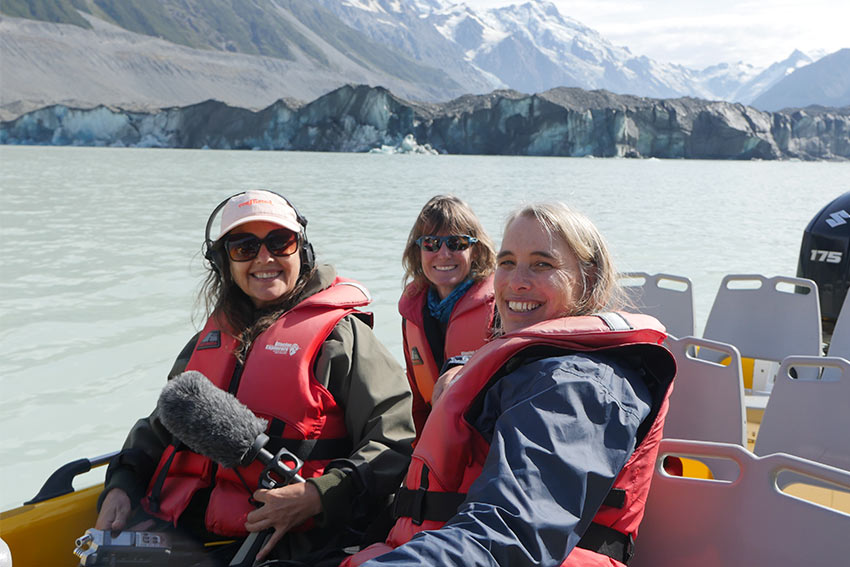Artwork responds to climate crisis

The dramatic disappearance of Aotearoa’s glaciers is an undeniable visual marker of climate change that is explored in Haupapa: The Chilled Breath of Rakamaomao, a collaborative online exhibition opening today.
Since the 1990s, Haupapa Tasman Glacier, the longest in Aotearoa, has melted at an average rate of 180m each year – almost twice the length of a rugby field. Beginning in the heart of Aoraki Mt Cook National Park, the glacier is fast transforming into a lake more than 240 metres deep that didn’t exist before 1989.
“The accelerating change of state of Haupapa glacier into the grainy liquid expanse of Haupapa awa, the lake below, is a highly visible indicator of climate catastrophe”, AUT Associate Professor of Art and Design and artist Janine Randerson says.
To Kāi Tahu iwi, the melting glacier is an ancestor, formed by the exhalation of Aoraki Maunga as he readied to speak. Stored inside Haupapa’s glacial ice are tiny bubbles of his breath – pockets of ancient atmosphere, sea breezes, pollen, carbon dioxide, methane, and the ash of Australian fires. Now that ancient breath is being released.
For the audio-visual exhibition, Haupapa: The Chilled Breath of Rakamaomao, Randerson - alongside AUT colleagues creative technologist Dr Stefan Marks and sound artist Dr Rachel Shearer (School of Future Environments), glaciologist Heather Purdie (University of Canterbury) and Kāi Tahu orator Ron Bull - approached Haupapa as a collaborator.
“By attuning to Haupapa through Kāi Tahu cosmologies, instruments of science, Rachel’s audio hydrophones and underwater camera receivers, we have created an online artwork, which is a ‘weather report’ of a creative kind”, Randerson says.
Beginning today at sunset in Te Wai Pounamu, on the Spring equinox [23 September 2022] and running to the end of November, live windspeed, solar radiation, temperature and precipitation updates from Aoraki Maunga, courtesy of NIWA, will be streamed continuously.
Woven through this is the voice of Ron Bull, of Kāi Tahu, Kāti Mamoe and Waitaha whakapapa, connecting the sound and images of Haupapa to the words and names of Kāi Tahu ancestors.
Randerson says Haupapa: The Chilled Breath of Rakamaomao responds sensorially to an urgent tipping point where we face water scarcity in some parts of our isles, and vanishing glaciers, flooding, severe storms and coastal erosion that meets rising seas on the other, as the whenua sinks incrementally back down to our watery origins.
The project is locally hosted by Auckland’s Te Tuhi gallery and is part of the global World Weather Network.
Formed in response to the climate emergency, the World Weather Network is a constellation of weather stations set up by 28 arts agencies around the world.
From 21 June 2022 to 21 June 2023, the Network hosts a series of online talks, presentations and performances, inviting leading thinkers from the fields of science, technology, ecology, philosophy and policy to talk about weather and climate with artists and writers.
To experience Haupapa: The Chilled Breath of Rakamaomao, visit haupapa.space.
Useful links